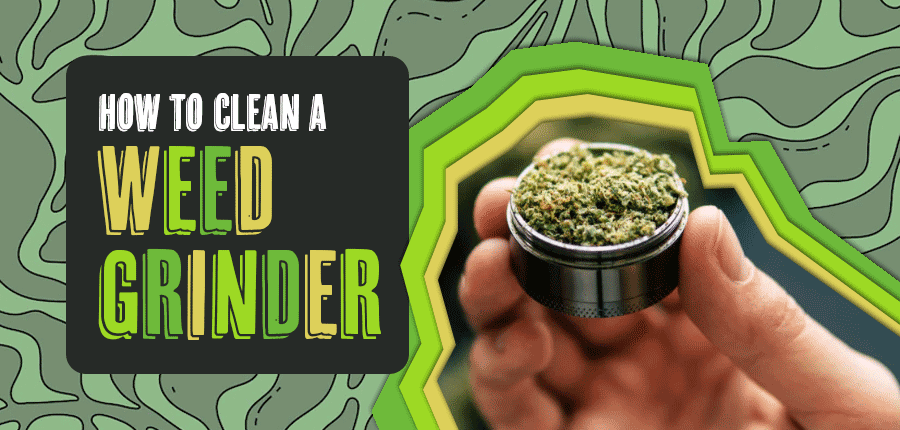Maintaining the cleanliness of your weed grinder is essential for maximizing its performance and ensuring a pleasant experience when using it. Neglecting to clean your grinder can result in various health risks for cannabis users.
When a grinder is left dirty, it becomes a prime environment for mold spores, allergens, and a buildup of debris, which can serve as a breeding ground for bacteria. This can lead to potential health issues when inhaling or consuming cannabis processed in a contaminated grinder. Fortunately, cleaning a weed grinder is relatively quick and straightforward, making it well worth the effort to ensure that the grinder operates at its best.
Regularly cleaning your weed grinder not only eliminates the risk of harmful contaminants but also helps to maintain the efficiency of the grinder itself. Removing any residue or stuck particles can prevent the accumulation of grime that could impede the grinder’s smooth functioning. This ensures that your grinder consistently delivers finely ground cannabis, optimizing the potency and flavor of your products.
Why Use A Weed Grinder?
While it is possible to break apart weed using your fingers manually, an herb grinder offers a superior method for achieving finely ground cannabis that is convenient and enjoyable to smoke. Utilizing a cannabis grinder allows you to effortlessly transform your weed into smaller, more manageable pieces, optimizing the smoking experience.
Your grinder serves as a valuable tool in enhancing your cannabis sessions, enabling you to achieve a consistent and even grind. This consistency ensures an efficient burn and maximizes the release of flavors, aromas, and cannabinoids, ultimately enhancing the overall enjoyment of your cannabis weed.
However, it’s important to note that just as your grinder provides numerous benefits, it also requires proper care and maintenance to continue functioning optimally. Cleaning your grinder is essential to its upkeep and demonstrates the care and attention it deserves.
Step-by-Step Guide to Cleaning A Weed Grinder
Weed grinders come in a variety of sizes, shapes, and materials. Some are made of metals, which can potentially rust when exposed to water. In contrast, others are constructed from plastics or acrylics that may dissolve or degrade if exposed to isopropyl alcohol. Therefore, it is crucial to determine the material your grinder is made of before attempting to clean it. Additionally, cleaning your grinder can present challenges if it is made of a combination of materials.
However, there is no need to be concerned. By taking extra precautions during the cleaning process, you can avoid any potential damage to the grinder’s components. The following instructions provide a brief overview of cleaning metal and plastic grinders. It’s important to gather specific tools and materials for the cleaning process, including:
Hot water
Isopropyl alcohol (for metal grinders)
Dish soap (for plastic grinders)
A large plate
Freezer
Soft paintbrush (or toothbrush)
Toothpick
Small container (for collecting kief)
Instructions:
Disassemble the Grinder Components: When disassembling your weed grinder, carefully handle the small pieces to avoid breakage or loss. For grinders with multiple parts, such as 4-piece or 3-chamber grinders, you will typically have a lid, collection chamber, grinder chamber, and kief chamber. Some grinders may also have a removable screen in the collection and kief chambers. Take caution when removing the delicate removable screen to prevent damage.
Place the Grinder Parts in the Freezer: Although not mandatory, placing the grinder parts in the Freezer for approximately 20 to 30 minutes can make subsequent cleaning procedures easier and more efficient. The cold temperature will solidify any sticky plant particles adhering to the grinder’s surface. Note that if you have a plastic grinder, handle it carefully after removing it from the freezer, as the cold temperature may make the plastic more brittle.
Empty the Weed Grinder: After removing the grinder parts from the freezer, place them on a large plate and gently tap or shake them against the plate to remove any remaining plant material. The plate serves as a convenient surface for collecting the small leftover weed. Alternatively, you can use a plastic cutting board or cereal bowl for this step.
Brush and Scrape: Use a soft paintbrush or toothbrush to brush all surfaces of the weed grinder. A small paintbrush, such as a watercolor paintbrush, works well for this task. If there is stubborn residue or gunk that the brush cannot remove, carefully use a toothpick to scrape off those areas.
Cleaning with Water and Isopropyl Alcohol: In this step, you will clean the weed grinder using water and isopropyl alcohol, following separate instructions for metal and plastic grinders.
For Metal Grinders: Submerge the grinder parts in a small bowl containing isopropyl alcohol. The alcohol helps eliminate bacteria that may be present in your grinder. Allow the parts to soak, allowing the alcohol to loosen any stubborn plant matter. Keep the parts immersed until the alcohol changes color, indicating that the particles have loosened.
For Plastic Grinders: Boil water and pour it into a pot. Place the grinder parts in the hot water and gently boil them over low heat for at least 1 minute. Use tongs to remove the parts from the hot water and cool them down with a towel until they reach room temperature.
Reassemble the Parts: Once the weed grinder parts have cooled down, carefully reassemble them and ensure proper alignment by testing the grinder’s functionality.

